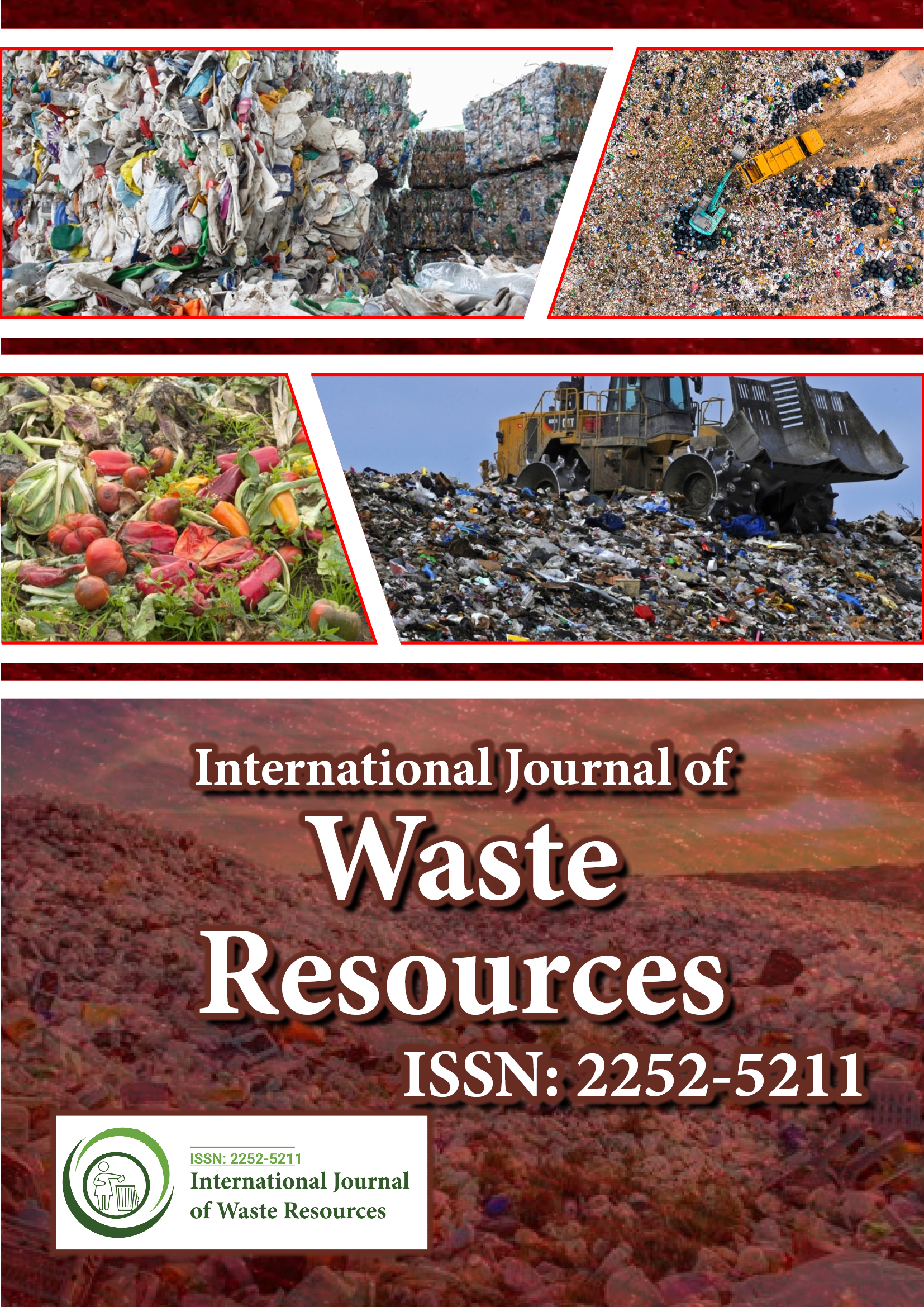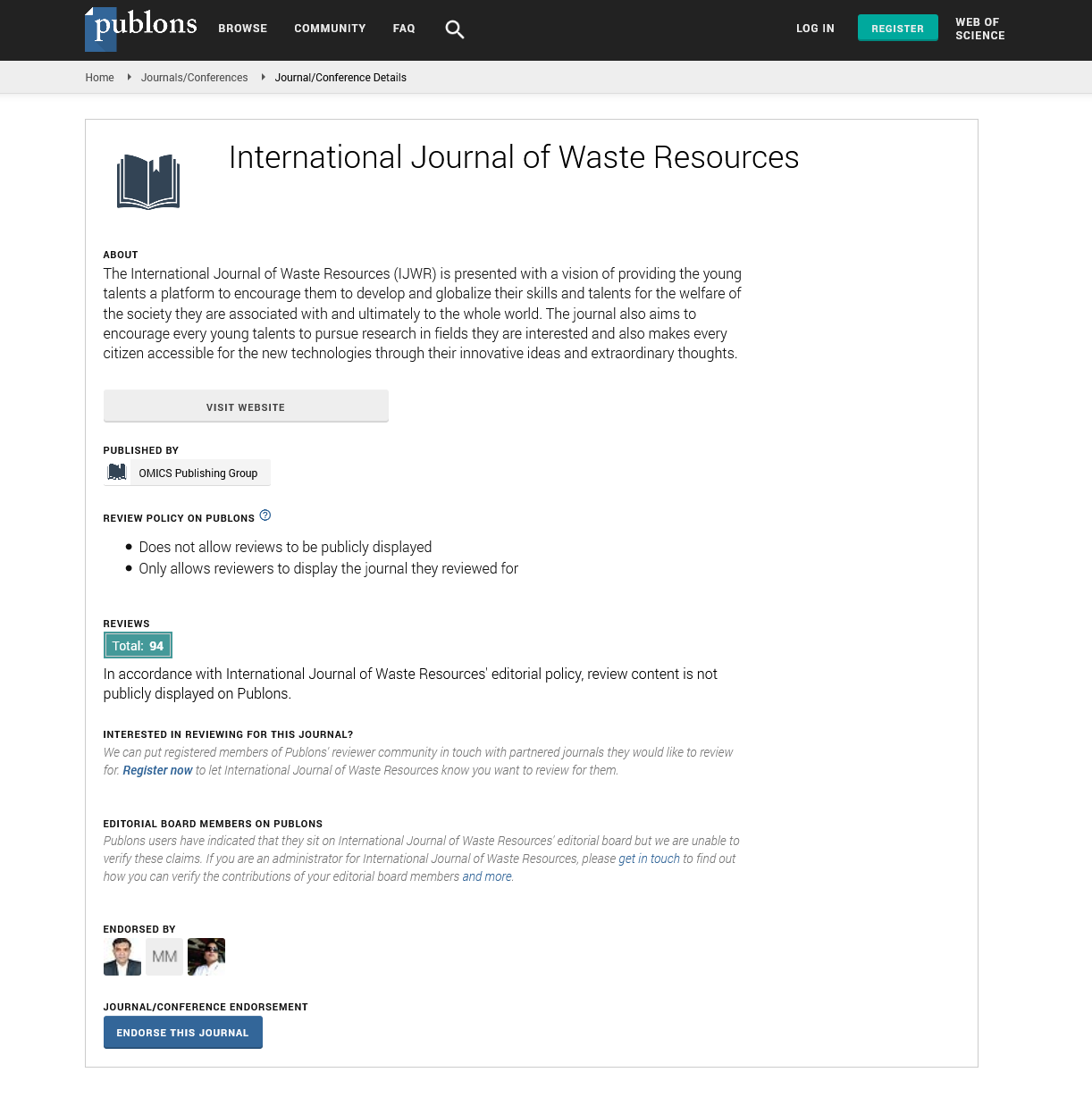Indexed In
- Open J Gate
- The Global Impact Factor (GIF)
- Open Archive Initiative
- VieSearch
- International Society of Universal Research in Sciences
- China National Knowledge Infrastructure (CNKI)
- CiteFactor
- Scimago
- Ulrich's Periodicals Directory
- Electronic Journals Library
- RefSeek
- Directory of Research Journal Indexing (DRJI)
- Hamdard University
- EBSCO A-Z
- Publons
- Google Scholar
Useful Links
Share This Page
Journal Flyer

Open Access Journals
- Agri and Aquaculture
- Biochemistry
- Bioinformatics & Systems Biology
- Business & Management
- Chemistry
- Clinical Sciences
- Engineering
- Food & Nutrition
- General Science
- Genetics & Molecular Biology
- Immunology & Microbiology
- Medical Sciences
- Neuroscience & Psychology
- Nursing & Health Care
- Pharmaceutical Sciences
Perspective - (2025) Volume 15, Issue 1
E-Waste Management: Addressing the Growing Challenge of Electronic Waste
Luca Almazroui*Received: 31-Jan-2025, Manuscript No. IJWR-25-29252; Editor assigned: 03-Feb-2025, Pre QC No. IJWR-25-29252; Reviewed: 14-Feb-2025, QC No. IJWR-25-29252; Revised: 21-Mar-2025, Manuscript No. IJWR-25-29252; Published: 03-Mar-2025, DOI: 10.35248/2252-5211.25.15.606
Description
In today’s digitally connected world, electronic devices are deeply embedded in every aspect of life. From personal gadgets like smartphones and laptops to larger appliances such as refrigerators and washing machines, technology has become indispensable. However, this rapid technological growth has resulted in a surge of discarded electronics, commonly known as e-waste, making it one of the fastest-growing waste streams globally. The improper disposal of e-waste poses serious environmental threats and health hazards, making its effective management an urgent global priority.
Electronic waste includes devices that have reached the end of their functional life ranging from computers, mobile phones and televisions to home appliances and batteries. These items often contain valuable materials like gold, silver and copper, alongside hazardous substances such as lead, mercury and cadmium. If not properly handled, these toxic materials can leach into the environment, contaminating soil, water and air.
The sources of e-waste are diverse. Consumer electronics contribute significantly to the problem due to short product life cycles and the constant release of newer, more advanced models. In corporate and industrial sectors, large volumes of outdated servers, networking equipment and machinery are regularly discarded. Government offices and educational institutions also add to the waste stream through periodic replacement of outdated electronics. Additionally, in many developing nations, the import of used or obsolete electronic goods from wealthier countries further escalates the problem, often overwhelming local disposal and recycling systems.
Improper e-waste handling results in a range of environmental and health consequences. Toxic substances from e-waste can contaminate soil and groundwater, adversely affecting agriculture and ecosystems. When electronic components are burned, particularly plastics and wiring, they release harmful gases such as dioxins into the atmosphere, contributing to air pollution. Human health is also at risk particularly among informal sector workers who dismantle electronics without protective equipment. Prolonged exposure to harmful substances can cause respiratory problems, skin disorders, neurological damage and even cancer. Moreover, poor recycling practices lead to the permanent loss of valuable materials that could otherwise be recovered and reused.
To manage e-waste effectively, a multi-pronged strategy is essential. At its core lies the principle of reducing the generation of waste by extending product lifespans and encouraging reuse. Consumers can play their part by delaying unnecessary upgrades and donating functional devices. When disposal becomes necessary, responsible recycling becomes critical. This requires the establishment and use of formal recycling facilities that follow safe dismantling practices and ensure that both valuable and hazardous materials are handled correctly.
Another key component is extended producer responsibility, which places the onus on manufacturers to manage the entire life cycle of their products. This encourages eco-friendly design and the implementation of take-back programs. Governments play a vital role by establishing and enforcing regulations that govern e-waste collection, recycling and disposal, while also supporting infrastructure development. Public awareness campaigns and designated drop-off centers can make it easier for individuals to participate in responsible disposal.
Globally, various efforts are underway to address the growing e-waste crisis. International agreements like the Basel Convention aim to control the cross-border movement of hazardous waste, ensuring it is managed in an environmentally sound manner. Initiatives such as Solving the E-Waste Problem (StEP) bring together experts and stakeholders to develop sustainable solutions. In India, the government introduced comprehensive E-Waste Management Rules starting in 2011, with subsequent revisions in 2016 and 2022. These regulations emphasize extended producer responsibility, the registration of recyclers and specific collection targets. However, despite these progressive steps, implementation challenges and limited public engagement persist.
Individual and community efforts are essential in complementing institutional frameworks. Simple actions such as refraining from frequent device replacements, donating old but functional electronics, using certified e-waste recyclers and spreading awareness about the risks associated with improper disposal can create a ripple effect that drives wider change.
Looking to the future, innovative approaches offer promising solutions to the e-waste problem. Urban mining the process of extracting valuable metals from electronic waste is becoming increasingly viable. Eco-design is being promoted to create products that are easier to repair, reuse and recycle. Technologies like artificial intelligence and robotics are being deployed to automate sorting and dismantling processes, increasing efficiency and safety. Blockchain systems are also being explored to ensure transparency and traceability in e-waste management.
Conclusion
Ultimately, e-waste management is a shared responsibility. It requires the collaboration of governments, manufacturers, recyclers, consumers and communities. By strengthening regulations, investing in technology and encouraging sustainable consumer behavior, we can build a more circular economy where resources are preserved and pollution is minimized. Through collective effort and innovation, it is possible to turn the challenge of e-waste into an opportunity for environmental protection and economic recovery.
Citation: Almazroui L (2025). E-Waste Management: Addressing the Growing Challenge of Electronic Waste. Int J Waste Resour: 15:606.
Copyright: © 2025 Almazroui L. This is an open-access article distributed under the terms of the Creative Commons Attribution License, which permits unrestricted use, distribution and reproduction in any medium, provided the original author and source are credited.

